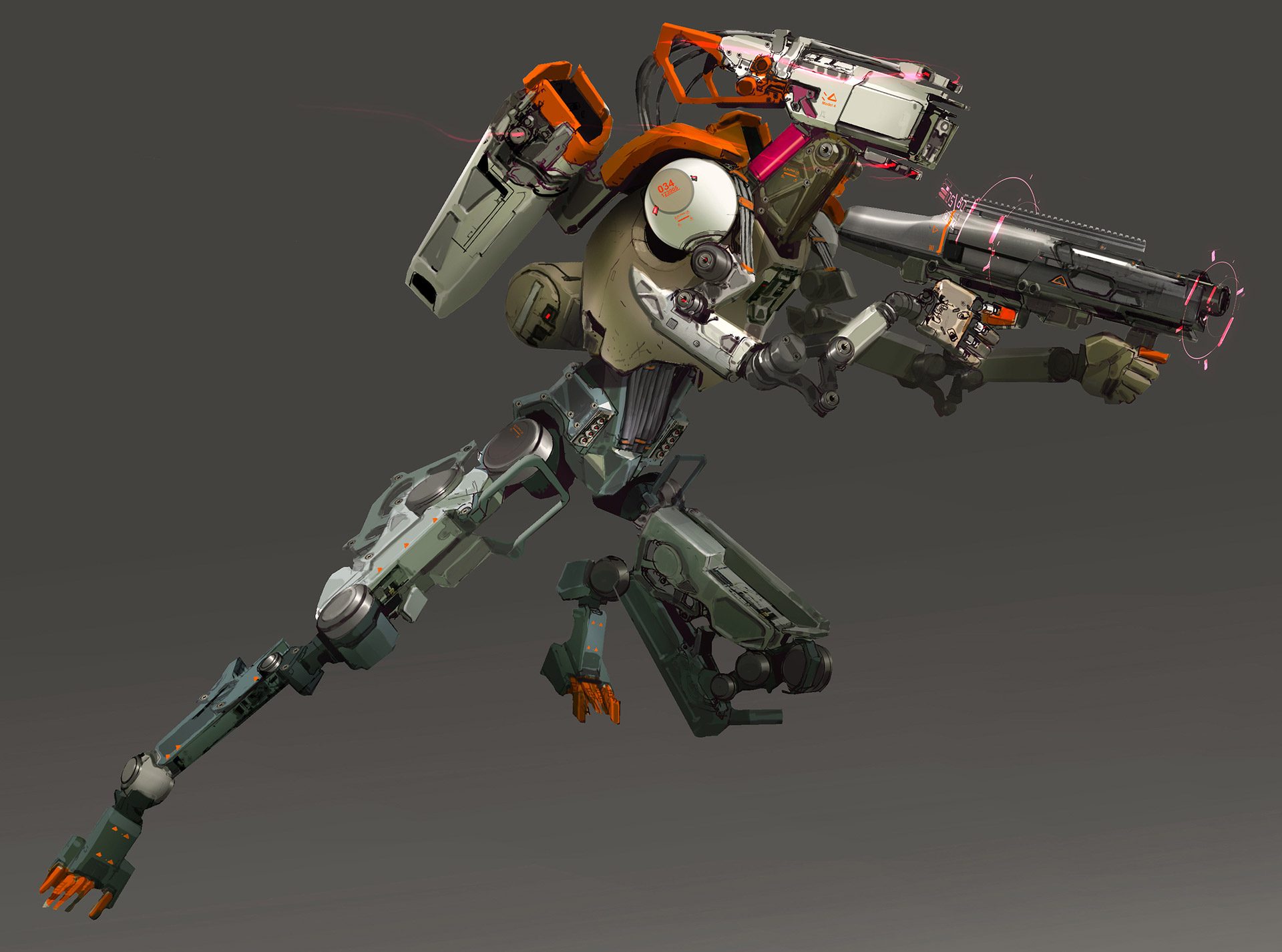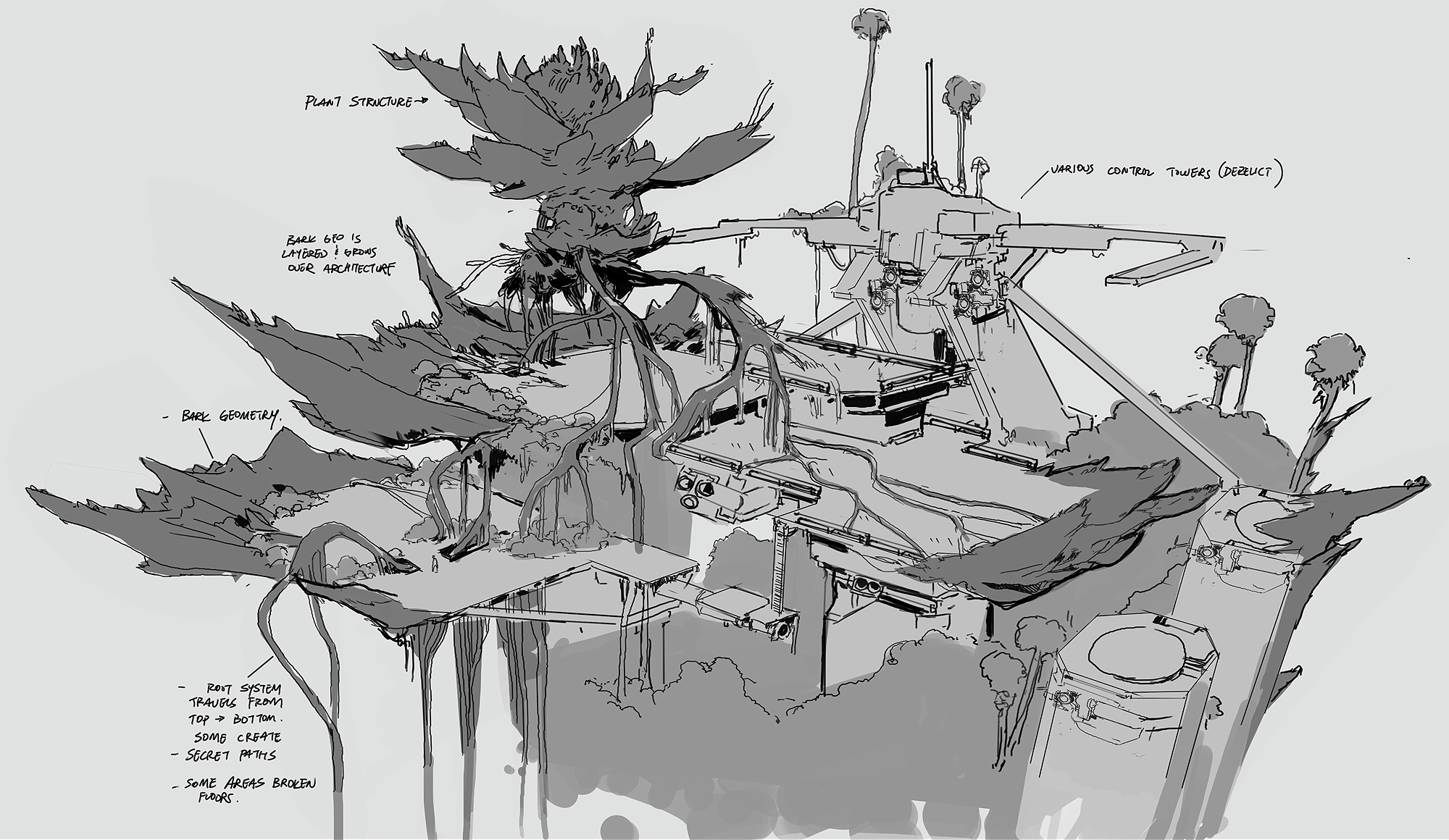Insomniac Games is no stranger to VR game development. Since 2016 the studio has created three Oculus exclusive VR titles—Feral Rites, Edge of Nowhere, and The Unspoken—but its next (and possibly last Oculus exclusive), Stormland, is unequivocally its most ambitious VR production yet. Stormland rewrites the rules about what a VR game can be by synthesizing & expanding many of the important lessons that Insomniac (and the industry at large) has learned about making compelling VR experiences in the years since first-gen consumer headsets hit the market. We spoke to the Lead & Principal Designers of Stormland, Mike Daly and Duncan Moore, to learn how they pulled it all together to create one of VR’s first truly native open-world games.
Editor’s Note: The exclusive artwork peppered throughout this article is best viewed on a desktop browser with a large screen or in landscape orientation on your phone. All images courtesy Insomniac Games; special thanks to artist Darren Quach.
Built to Move
While it was entirely normal and useful, in non-VR games, to grab the camera and swing it about the game environment as needed, in VR the camera is the player’s head, and moving it around jarringly is a recipe for discomfort and nausea. Even moving virtually with a joystick from A to B can be uncomfortable in VR if special care isn’t taken.
In the early days of VR, the common refrain was to simply never move players virtually to ensure comfort. This led to VR’s (mostly derided) ‘wave shooter era’. These games, even if they were otherwise compelling, lacked something core to most non-VR games—the ability to seamlessly traverse large and varied environments.
Since then, VR developers have discovered a handful of methods to comfortably move players. But locomotion is so intricately interwoven with game design that the best VR games tend to be those which think of locomotion as a piece of the gameplay itself, not just a necessary conceit. Stormland, as you may have gathered by now, is one of those games in which locomotion is clearly part of the gameplay. And this is by no accident, says Stormland’s Principal Designer, Duncan Moore.
“Locomotion has always been in the core DNA of Stormland. Primarily because fun traversal mechanics are close to our heart at Insomniac. From the grind rails of Ratchet & Clank, to the wild city-hopping acrobatics of Sunset Overdrive, we at Insomniac know how powerful traversal mechanics can be. If done right, they create a great foundation of sticky gameplay that’s all about feel and feedback. Everybody understands the thrill of moving through space—it’s simple, relatable fun that connects to the kid in all of us,” said Moore. “From the very inception of Stormland, we knew we wanted players to slipstream across the clouds, jump, and glide in an open world setting. It’s one of the very first things we proved to ourselves and [Oculus Studios, Stormland’s publisher] when we started exploring the game. The big question from the very start was; can we pull off locomotion that is thrilling and free but also comfortable enough for VR?”
Moore said that the studio knew from its experience on prior VR titles that players were are more comfortable in VR if movement is tied to broad and relatable body motions, like hand and arm movements, rather than buttons or sticks.
“This is where we started with our first prototype of slipstreaming [zooming across the clouds] and gliding [flying through the air]. We found that mapping speed and strafing to hand position worked pretty well and was relatable. We kind of mashed up the ideas of superhero flight with surfing. While gliding across the clouds, you can reach your hands forward to speed up and pull them into your body to slow down. To change direction, you simply drift your hand input left and right to steer where you want to go. It ended up working well from the very start—we knew very early on that this was the direction for us.”
And though slipstreaming and gliding worked well enough to become a significant component of the game, it was climbing that really broadened the possibilities Moore explained.
“Everyone at the office loved VR climbing games and we knew this would be a great fit for open-world exploration. We didn’t know how big of a feature this would be at first, but once we got it in it changed everything! At first we planned to restrict climbing to certain surfaces, but after some experimentation we realized that free climbing on any surface suited our game vision perfectly,” he said. “Grabbing and climbing anything was a big revelation. That is, to be able to grasp any surface and grapple up it or grab it and fling yourself any direction. You are connecting your real hand to this virtual environment and moving yourself around in a very analogue, playful way. This is what VR can do that [no other medium] can! It immediately felt special.”
Moore recalled how central these mechanics became to the rest of the gameplay in a way that simply wouldn’t have worked if locomotion hadn’t been carefully considered from the outset.
“Committing to these mechanics early on set the direction for the rest of the game—it was the kind of bold decision that we needed to put traversal mechanics front and center. Our whole game is built from the notion that you can slipstream, climb, and glide almost everywhere in the open world. It affected every aspect of the game design and presented a mountain of challenges for us to solve, but it was totally worth it. It’s at the very heart of what makes Stormland so thrilling to experience.”



